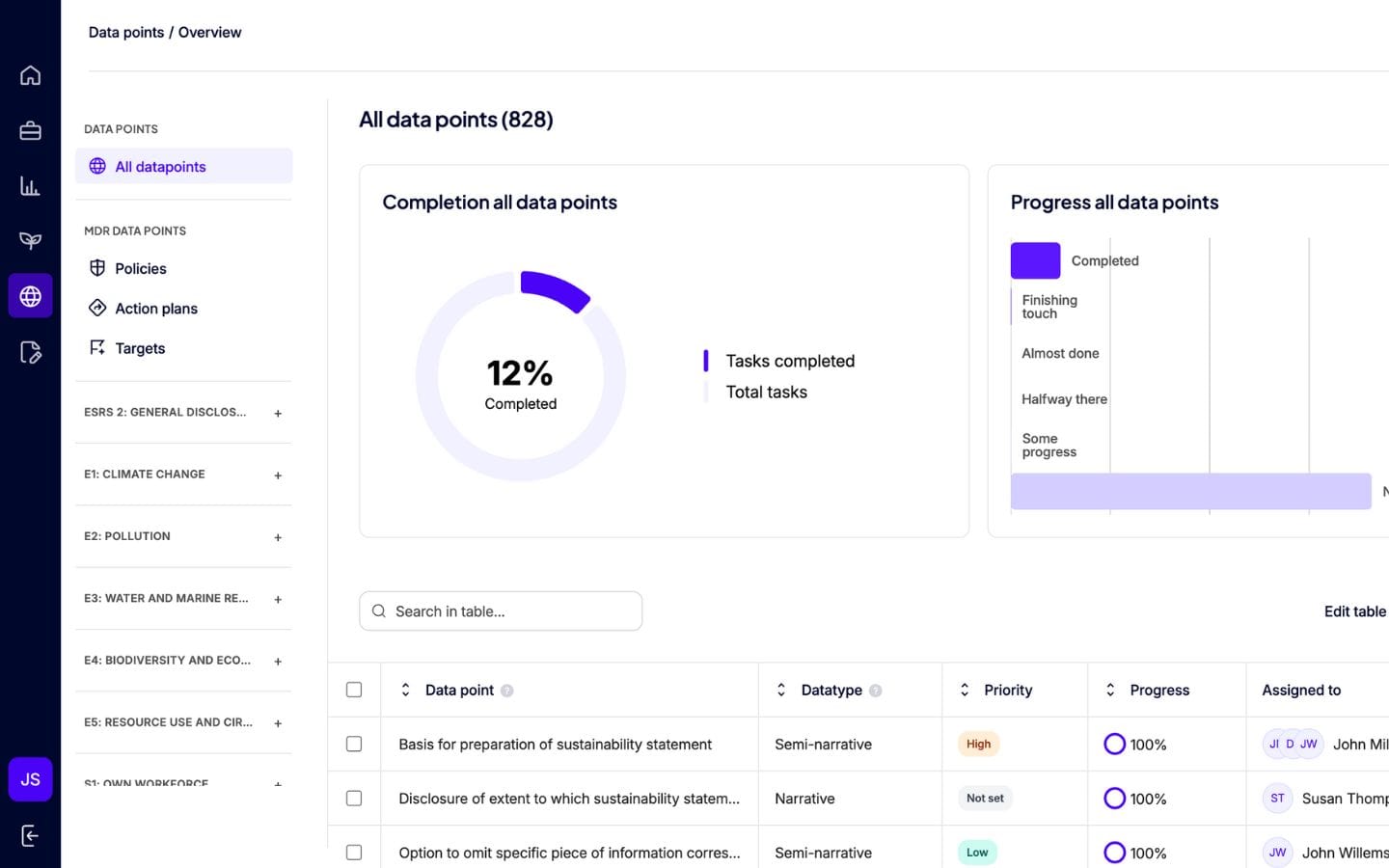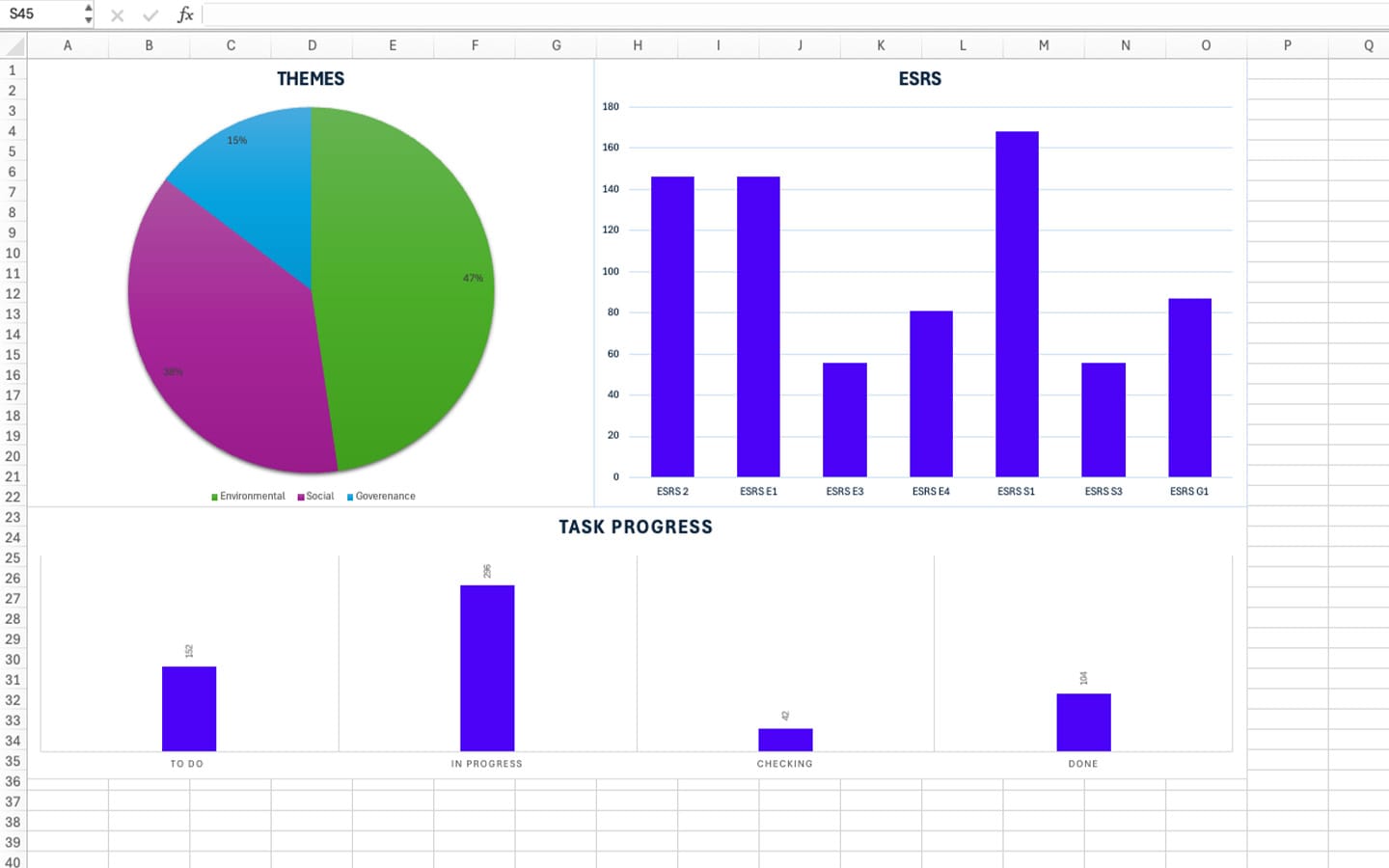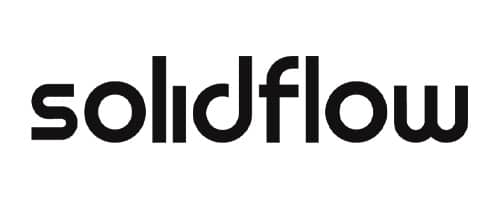Why using a CSRD dashboard?
Using a CSRD dashboard offers several key advantages that can streamline sustainability reporting and data management. First and foremost, it provides a clear, centralized overview of all relevant data, making it easier to track progress and quickly identify any gaps or areas needing attention.
In addition to offering comprehensive visibility, a CSRD dashboard enhances collaboration by allowing teams to access and review the same information in real time. This ensures that everyone remains aligned, informed, and able to make data-driven decisions efficiently.
Furthermore, the risk of errors decreases significantly. With centralized, automatically updated data, there’s less reliance on manual input. This reduces the chances of missing critical details or making mistakes. This not only improves accuracy but also saves valuable time and resources.
The importance of using a dashboard for CSRD
The CSRD is a comprehensive process. It involves numerous data points that require careful tracking. Each data point has its own specific tracking requirements.
For example, consider your energy consumption. This represents a single data point within the broader CSRD framework. Both your CSRD progress and individual data points need to be monitored carefully to ensure everything is complete.
Managing this level of complexity and multiple “layers” demands thorough planning and precise tracking. As such, using dashboards to monitor both overall progress and specific metrics, like energy consumption within the relevant category, can be highly effective.
Different CSRD dashboard solutions
When building a CSRD dashboard, there are several approaches to consider, each with its own advantages and disadvantages. The following section explores these different solutions and highlights their respective benefits.
Data visualization tools
The first approach involves using data visualization tools such as Tableau and Power BI. These tools are widely recognized for their powerful data analysis capabilities, intuitive user interfaces, and the ability to transform complex datasets into visual reports.
For building a custom dashboard to support your entire CSRD process, these tools offer significant benefits. They provide a high degree of flexibility, allowing you to tailor visualizations to specific reporting requirements, track key sustainability metrics, and integrate data from multiple sources seamlessly. Their features and customizable dashboards make it easier to present CSRD data in a way that fits your process and workflow.
However, while these tools are robust and versatile, they can be quite expensive, particularly for organizations that require enterprise-level licenses. Additionally, setting up and configuring these dashboards to meet CSRD-specific needs can be time-consuming. It requires specialized skills and training in both CSRD and data visualization to set up correctly.
Summary of using data visualization tools:
- Offers great flexibility to fit your workflow and requirements.
- Can be expensive and time-consuming to set up.
- Requires expertise in both data visualization and CSRD.
Dedicated CSRD software
Another solution is dedicated CSRD software. There are many different software solutions for CSRD, offering a wide variety of features. Some focus on broader ESG metrics, while others primarily concentrate on the CSRD framework.
Generally speaking, these types of software solutions are excellent for managing CSRD with ease. They have built-in dashboarding capabilities and therefore don’t require extensive knowledge of data visualization or CSRD. This allows you to get started with CSRD right away and helps avoid errors during the setup process.
Another major advantage of these solutions is that they offer additional features that can be helpful for your CSRD process. For example, they may include a double materiality tool, resources for conducting a gap analysis, or tools for tracking carbon emissions.
However, a downside of these tools is that they often lack flexibility. The workflows are typically static, and the dashboards are pre-built, leaving less room for customization. Additionally, these tools can be expensive, although costs vary depending on the specific solution.

Summary of using CSRD software:
- Provides user-friendly, built-in tools for easy CSRD management.
- Requires minimal expertise in data visualization and CSRD to get started.
- Offers additional features like double materiality assessments and carbon tracking.
- Can be expensive and often lacks flexibility.
Developing custom dashboards
The final option is to develop a custom dashboard, which can be achieved through various methods. This might include using programming languages for data visualization, such as Python or R, or leveraging more familiar tools like spreadsheets and organized folder structures.
One of the key advantages of this approach is its high degree of flexibility. It allows organizations to design workflows and reporting structures tailored precisely to their specific CSRD requirements. You can adapt the dashboard to meet your unique operational needs and preferences.
Additionally, this method is often more cost-effective, as it typically requires no investment in additional software. Many companies already have the necessary tools and platforms in place, such as Microsoft Excel, Google Sheets, or internal development resources.
However, this approach comes with challenges. Without careful management, custom dashboards that rely heavily on spreadsheets and manual data handling can become difficult to maintain and navigate. This lack of structure can lead to disorganization, making it harder to ensure data consistency and accuracy. As a result, this method can be more prone to errors.
Summary of using custom dashboard:
- Can be tailored to specific CSRD needs and workflows.
- Using existing tools requires minimal extra expenses.
- Can become hard to manage and error-prone with manual data handling.

Tips for building a CSRD dashboard
Building a CSRD dashboard is crucial for keeping a centralized overview and reducing errors. However, creating good dashboards can be challenging at first. The tips outlined below can make it easier to get started and do the right things.
1. Get a good understanding of all relevant data points
One of the main requirements is having a good understanding of the data points you need to report. This means you should ideally complete the double materiality assessment and, based on this, know exactly which data points are required.
When you know which data points are relevant for your company, you can perform a CSRD gap analysis to determine which data is already in place and which data you still need to collect. This exercise also helps you get to know the data points better.
Once you fully understand all the data points you need to report and what they entail, you can start setting up the right dashboards. This approach reduces the number of revisions needed and allows you to choose the right solution from the start.
2. Choose the solutions based on your resources
Another important step is to determine the dashboard solutions based on the resources you have. Resources can include money, time, and expertise. Choosing a solution that aligns with your available resources will help ensure a smoother implementation process.
A crucial resource is expertise. CSRD is a comprehensive project that requires different specializations. This includes people who understand the CSRD framework and have a deep understanding of what needs to be reported and how it should be reported.
When you don’t have this expertise, choosing custom dashboarding solutions might not be the best approach. In this case, you might not know what to dashboard or how to set it up effectively. Choosing dedicated CSRD software can be more beneficial because it provides more guidance for both dashboarding the data points and reporting on them.
3. Define a standardized workflow
Before starting to build a CSRD dashboard, you need to establish a clear strategy for how you will approach CSRD reporting. This includes defining your reporting framework, data collection methods, and internal responsibilities. Having this structure in place will ensure that your dashboard aligns with your overall CSRD process.
Building the right workflow often involves a clear differentiation between roles. Many companies assign different data points to various departments. A CSRD team or project owner is responsible for ensuring all the data is collected. Finally, an internal auditor checks if all data is reported accurately and completely according to the requirements.
As you can see, having a dashboard in this case is highly valuable for tracking whether all data is collected, identifying who is responsible for each data point, and confirming which data has been reviewed by the auditor. However, this can only be set up effectively if you have a well-defined workflow in place.





